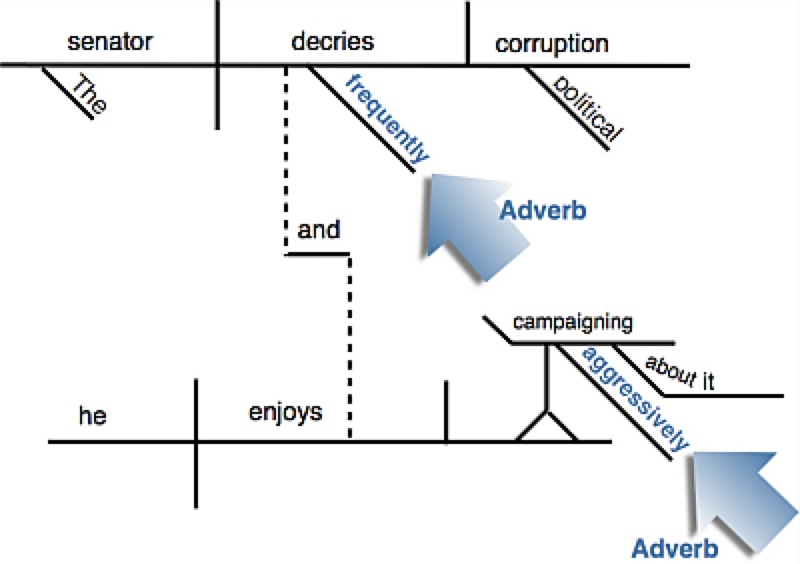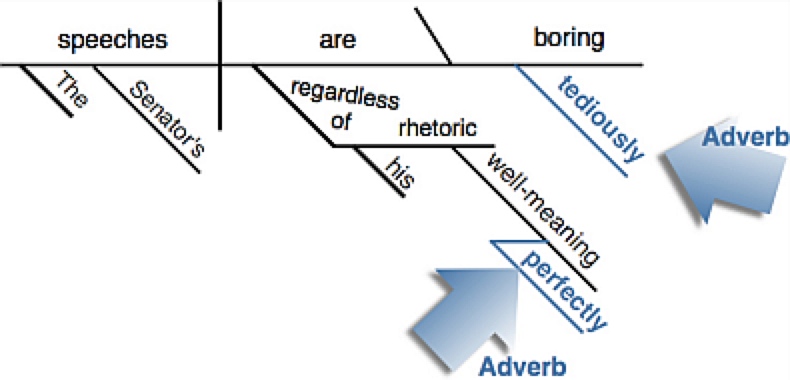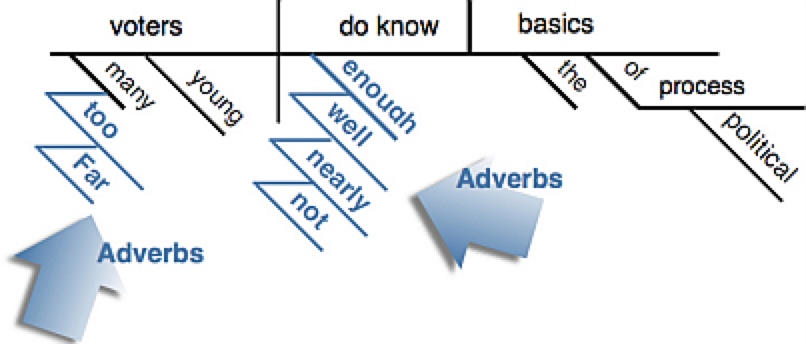
Karl J Sherlock
Associate Professor, English
Email: karl.sherlock@gcccd.edu
Phone: 619-644-7871

Many single-word adverbs end in -ly: happily; truthfully; etc. However, there are enough adjectives also ending in -ly to confuse and confound: unseemly; motherly; comely; silly; etc. A better way to identify an adverb is to test if it answers questions such as "How?", "How much?", "When?" or "In what direction?" Then, double-check to make sure that the word is actually modifying something that adverbs modify. The common adverb has three modifying functions:
Placing a single-word adverb on a sentence diagram is only as difficult as determining which of the three modifying functions it serves.
If an adverb modifies a verb or a noun verbal (such as a gerund), it's simply placed on a diagonal line underneath it:
In the compound sentence above, the first main clause contains an adverb modifying a verb, while the second main clause possesses a gerund (a verbal) modified by an adverb. Even though a gerund is a noun, the adverb still goes under it, just as it would go under a regular verb:

If an adverb modifies an adjective, or another part of speech acting like an adjective (such as a participle), then it is placed on a diagonal line and appended to the word it modifies. The exception is the adjective complements that follow linking verbs. In this case, the adverb is placed under the adjective complement on a diagonal line, just as it would if it were under a verb:

If an adverb modifies another adverb, then it is placed on a diagonal line and appended to the word it's modifying:

In the example above, all the adverbs are in bold, but only those modifying other adverbs are underlined. The word "not" is one of those adverbs that can be moved around for rhetorical emphasis, but this makes it more susceptible to becoming a misplaced modifier, one of the major errors that occur with adverbs. The sentence doesn't really mean that young voters do not know the basics of the political process, but rather that they know them not nearly well enough. Here's another example of an egregious modifier error:
As you can see in the example above, pairing the adverb "not" with the adjective "alike" is illogical. It belongs with the word "All":
See "Modifier Errors" for more information.
Karl J Sherlock
Associate Professor, English
Email: karl.sherlock@gcccd.edu
Phone: 619-644-7871

8800 Grossmont College Drive
El Cajon, California 92020
619-644-7000
Accessibility
Social Media Accounts